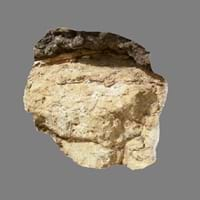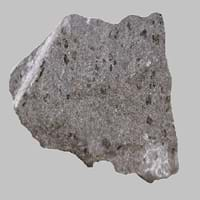Definition
Laterite rock is a type of Sedimentary rock which is rich in iron and aluminium, formed in hot and wet tropical areas
Tephrite is an aphanitic to porphyritic textured, volcanic igneous rock
Discoverer
Francis Buchanan-Hamilton
Van Tooren
Etymology
From Latin later brick, tile + -ite1
From Greek tephra, ashes from Indo-European base, to burn
Class
Sedimentary Rocks
Igneous Rocks
Sub-Class
Durable Rock, Soft Rock
Durable Rock, Hard Rock
Group
Not Applicable
Volcanic
Other Categories
Fine Grained Rock, Opaque Rock
Coarse Grained Rock, Fine Grained Rock, Medium Grained Rock, Opaque Rock
Texture
Earthy, Massive, Porphyritic
Aphanitic to Porphyritic
Color
Brown, Buff, Red
Black, Brown, Colourless, Green, Grey, White
Durability
Durable
Durable
Appearance
Rough and Banded
Vesicular
Interior Uses
Decorative Aggregates, Flooring, Interior Decoration
Decorative Aggregates, Flooring, Homes, Interior Decoration
Exterior Uses
As Building Stone, As Facing Stone, Garden Decoration
As Building Stone, As Facing Stone, Garden Decoration, Office Buildings
Other Architectural Uses
Curbing
Curbing
Construction Industry
Cobblestones, for Road Aggregate, Landscaping, Roadstone
Landscaping
Medical Industry
Not Yet Used
Not Yet Used
Antiquity Uses
Artifacts, Monuments, Sculpture
Artifacts, Sculpture
Commercial Uses
An Oil and Gas Reservoir, Source of bauxite, Used in aquariums
Production of Lime, Soil Conditioner
Types
Not Available
Not Available
Features
Is one of the oldest rock, Very fine grained rock
Host Rock for Lead
Archaeological Significance
Monuments
Used
Not Yet Used
Famous Monuments
Data Not Available
Not Applicable
Famous Sculptures
Data Not Available
Data Not Available
Pictographs
Used
Not Used
Petroglyphs
Used
Not Used
Formation
Laterite is a type of sedimentary rock which is generally a reddish weathering product of basalt.
Tephrite is a fine-grained, hard rock which is a type of metasomatite, essentially altered basalt. It forms with or without crystallization, either below the surface as intrusive rocks or on the surface as extrusive rocks.
Mineral Content
Aluminum Oxides, Biotite, Hematite, Hornblade, Iron Oxides, Manganese Oxides, Micas, Muscovite or Illite, Plagioclase, Pyroxene
Alkali feldspar, Nepheline, Plagioclase, Pyroxene
Compound Content
Aluminium Oxide, CaO, Iron(III) Oxide, FeO, Potassium Oxide, MgO, MnO, Sodium Oxide, Phosphorus Pentoxide, Silicon Dioxide, Titanium Dioxide
CaO, Carbon Dioxide, MgO, Silicon Dioxide
Types of Metamorphism
Not Applicable
Cataclastic Metamorphism, Contact Metamorphism, Impact Metamorphism, Regional Metamorphism
Types of Weathering
Biological Weathering, Chemical Weathering
Biological Weathering, Chemical Weathering, Mechanical Weathering
Types of Erosion
Chemical Erosion, Water Erosion, Wind Erosion
Chemical Erosion, Coastal Erosion, Glacier Erosion, Sea Erosion, Water Erosion
Grain Size
Fine Grained
Medium to Fine Coarse Grained
Fracture
Conchoidal
Uneven
Streak
White
Bluish Black
Porosity
Highly Porous
Very Less Porous
Luster
Dull
Subvitreous to Dull
Compressive Strength
Not Available
Cleavage
Not Applicable
Crenulation and Pervasive
Toughness
Not Available
2.4
Specific Gravity
Not Available
2.86
Transparency
Opaque
Opaque
Density
Not Available
2.8-2.9 g/cm3
Specific Heat Capacity
Not Available
Resistance
Heat Resistant, Pressure Resistant
Heat Resistant, Impact Resistant
Deposits in Eastern Continents
Africa
East Africa, Western Africa
Namibia, Uganda
Europe
England, Romania, Scotland
Germany, Hungary, Italy, Portugal, Spain
Others
Not Yet Found
Not Yet Found
Deposits in Western Continents
North America
Canada, USA
USA
South America
Not Yet Found
Not Yet Found
Deposits in Oceania Continent
Australia
Central Australia, Western Australia
New Zealand, Western Australia
All about Laterite and Tephrite Properties
Know all about Laterite and Tephrite properties here. All properties of rocks are important as they define the type of rock and its application. Laterite belongs to Sedimentary Rocks while Tephrite belongs to Igneous Rocks.Texture of Laterite is Earthy, Massive, Porphyritic whereas that of Tephrite is Aphanitic to Porphyritic. Laterite appears Rough and Banded and Tephrite appears Vesicular. The luster of Laterite is dull while that of Tephrite is subvitreous to dull. Laterite is available in brown, buff, red colors whereas Tephrite is available in black, brown, colourless, green, grey, white colors. The commercial uses of Laterite are an oil and gas reservoir, source of bauxite, used in aquariums and that of Tephrite are production of lime, soil conditioner.










